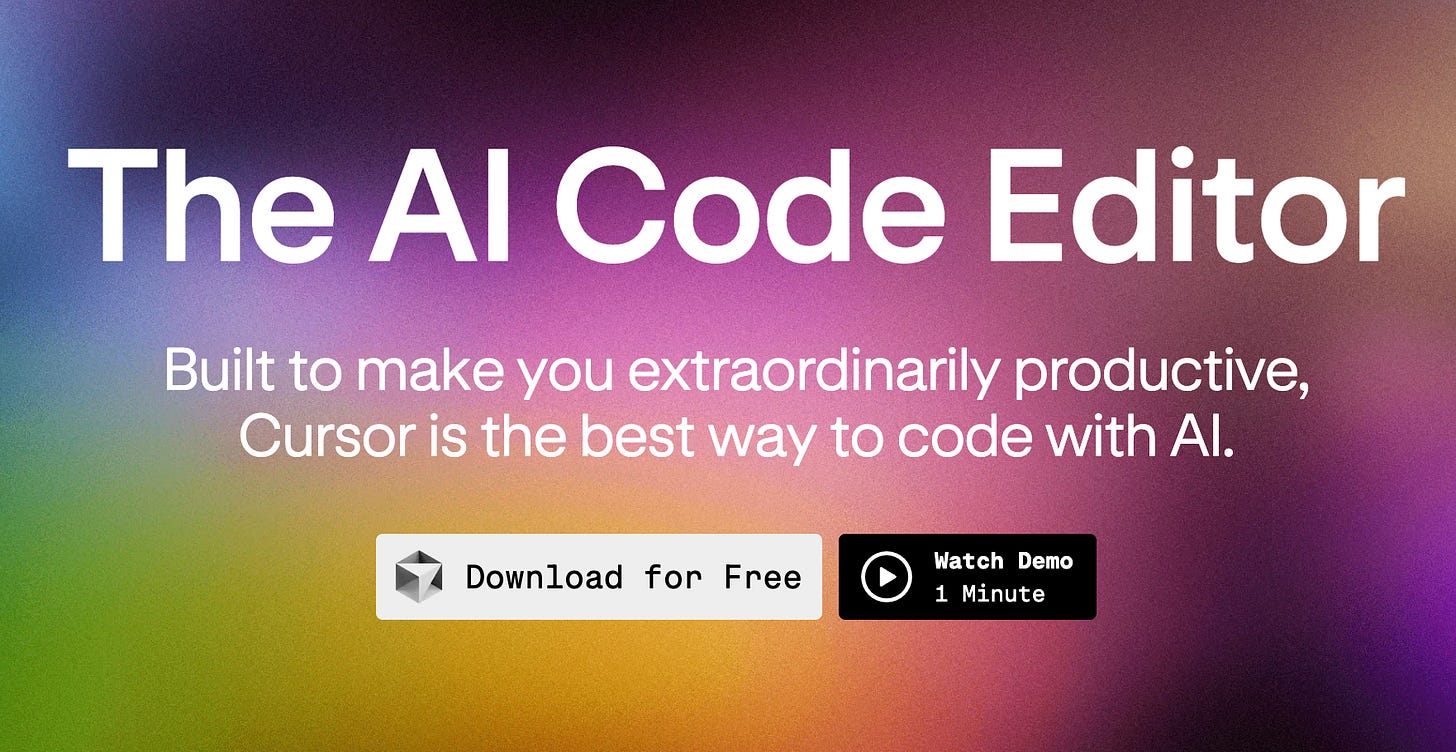From VS Code to Cursor: a developer's journey in adopting an AI code editor.
One of the most effective ways to drive acquisition for developer tools is to truly understand the journey a developer takes to discover and adopt your product. It’s not enough to simply ask, ‘How did you hear about us?’ It is worth digging deep into the details of the journey: what triggers action and how various touchpoints influence their decision.
In this article, I explore how a developer discovered and integrated Cursor, an AI-powered code editor, into their workflow. I interviewed Sam, an ML engineer and avid VS Code user, who recently started using Cursor in the last few weeks.
If you'd asked Sam how he heard about Cursor, he would have said Twitter (X). While Twitter sparked initial awareness, it was a Linkedin post from a machine learning content creator that changed his mind. A coworker’s recommendation then gave him the final push to install Cursor. Together, the ML content creator and coworker convinced him to make the switch. Sam pointed out that the more familiar you are with someone, the more influence they have:
“You trust someone you know more than just someone you follow on Twitter.”
This shows how multiple touchpoints, including deeper engagements, often work together to drive adoption.
Here’s a closer look at Sam’s journey:
Twitter (2023)
Linkedin Post from Aladdin Persson (Sept 2024)
Coworker’s recommendation (Sept 2024)
First interaction: Twitter
Sam first came across Cursor on Twitter in 2023 through various accounts he followed. It took several exposures to spark his curiosity, though it wasn’t enough to push him to explore it further at the time.
From awareness to consideration: Linkedin
A year later in September 2024, Sam saw a Linkedin post by Aladdin Persson, a machine learning engineer and Youtube content creator. Aladdin is known for his high-quality tutorials on frameworks like PyTorch and TensorFlow, which had been instrumental in Sam's early learning. Although Sam didn’t know Aladdin personally, watching his videos over time built a sense of trust and familiarity, making him feel closer than just another Twitter account.
“You can tell Aladdin puts a lot of effort into teaching the community. When you trust and respect someone in the industry, you listen to what they say when they recommend something.”
Aladdin’s post highlighted the productivity gains from using Cursor, specifically that it was better than copying and pasting from ChatGPT. This is what triggered a switch from curiosity to actual consideration.
Other aspects of the post that were effective:
He highlighted pain points, not just benefits, making it feel more authentic.
He mentioned revisiting Cursor, showing that he invested time in evaluating it beyond initial impressions.
There’s a conversational tone to it, making him relatable. It feels like a friend is sharing their thoughts with you.
This example shows how quickly developers can adopt a product based on trusted recommendations. All it took was just one Linkedin post to convince Sam to try Cursor. In the dev tools industry where there is no shortage of new tools and frameworks, influencers help filter out the noise. This highlights the importance for dev tools companies to build authentic relationships within the developer community.
From consideration to activation: a coworker’s recommendation
Aladdin’s post did the heavy lifting of establishing trust and credibility. Sam now saw Cursor as a tool worth considering. But he needed one final nudge to move from consideration to action.
It wasn’t until a casual conversation with a coworker, just one or two days later, that Sam made the leap. He asked his coworker what he thought of Cursor, and the response was: 'Yeah, try it, it’s cool.' That was all it took for Sam to install Cursor, just a simple, low-pressure affirmation from someone in his immediate circle.
Overall, this journey highlights the importance of authentic community engagement and leveraging influential voices within that community to drive adoption. Sam adopted Cursor because he trusted a recommendation from someone he respected in the ML space.
It's often a mix of touchpoints, trust from an influencer and validation from a coworker or peer, that ultimately leads to action. This underscores why marketers need to create a system where users can hear from multiple trusted sources.
Finally, I highly recommend conducting journey mapping interview with your users. Allowing them to share their full journey uncovers richer insights and helps you understand what truly moves the needle.
If I could go back, I would ask Sam a few more questions:
Why didn’t he install Cursor after seeing the Linkedin post? Why did he still need to wait for his coworker’s opinion? Was it timing, like not having his work laptop, or something else?
Which Twitter accounts mentioned Cursor, and what were the specific tweets? Why weren’t they effective enough to lead him to try it immediately? Or, perhaps, what about them at least sparked his curiosity?
Could anything have sped up Sam’s journey? Notice it took at least a year before Sam saw the Linkedin post. If productivity was the key factor that led him to install Cursor, would he have made the switch earlier if he’d seen this message sooner?
What makes Aladdin’s tutorials stand out? What sets him apart from other creators in the ML space?
Thanks for reading! 💜



